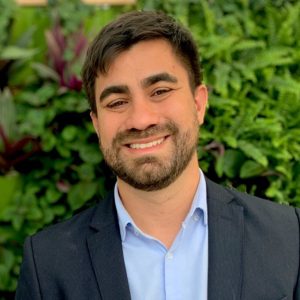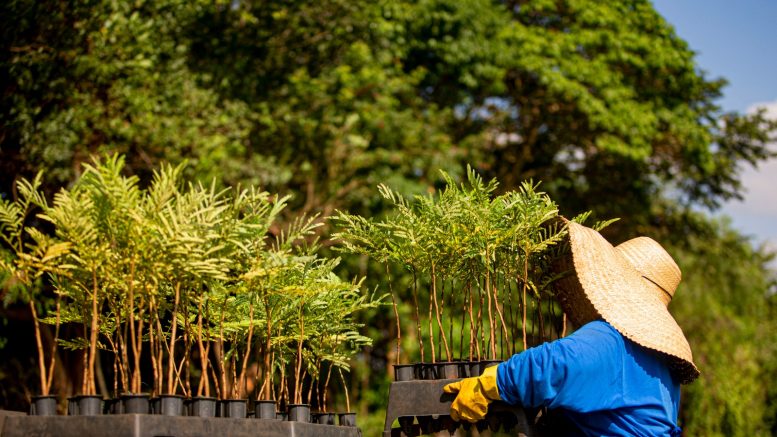“The first carbon credits are issued between 3 and 7 years after the projects begin…”
Lucas Lamare is the land acquisition and partnerships manager at re.green, a company focused on large-scale ecological restoration projects.
Lamare is a forest engineer with an MSc. in Forest Economics from the University of Brasília, an MBA in Environmental Management and Project Management.

Lucas Lamare, partnerships manager at re.green
AgriBrasilis – How can 1 million hectares of forests be restored in Brazil?
Lucas Lamare – By working at scale and in partnership. We are restoring 1 million hectares of native forests in strategic areas of the Atlantic Forest and the Amazon. We already have over 26,000 hectares under active restoration, with nearly five million seedlings planted and assisted natural regeneration techniques.
The scale we aim for requires science, technology, and collaboration with those in the field. We use territorial intelligence, carbon mapping, and drones. And we work alongside nurseries like Bioflora, which can produce up to 10 million seedlings per year with high genetic diversity. All of this is done with a focus on biodiversity gains and resilient forest structures.
Our projects are only viable with strong partners — farmers, landowners, and local communities who share the same commitment to keeping the forest standing.
AgriBrasilis – Is it possible to harvest native wood and still be sustainable?
Lucas Lamare – Yes, it is not only possible but necessary. We incorporate the production of native timber species as part of an ecological restoration strategy. This means planting, managing, and harvesting species with commercial value in just a fraction of the areas, after 20 to 30 years, based on a single selective cutting cycle. This practice, besides generating long-term revenue, contributes to ecological diversity and balance.
We follow the principles of sustainable management and natural regeneration, ensuring the forest continues to evolve after harvesting. We restore functional ecosystems that sequester carbon, support biodiversity, and can indeed generate economic value.
AgriBrasilis – Is forest restoration profitable? How long does it take?
Lucas Lamare – Yes, but it’s a long-term investment. The first carbon credits are issued between 3 and 7 years after the projects begin. They are generated based on rigorous methodologies and have high integrity. Native timber can generate returns in 20 to 30 years, through a single harvest cycle. Over time, there are also opportunities with non-timber forest products — such as seeds, oils, and fruits. This model combines different revenue streams, with long-term contracts, which provides predictability for investors and partners.
“Microsoft was the first global company to support our high-integrity restoration model…”
AgriBrasilis – How does re.green’s land lease system for carbon credits work?
Lucas Lamare – It works like this:
-
The landowner leases a degraded area.
-
Re.green assumes all investments — from planting to maintenance.
-
The landowner receives financial compensation.
-
The land remains under their ownership, but it begins to generate a new type of environmental and economic value.
This model combines legal security, land appreciation, and a positive legacy for future generations.
AgriBrasilis – How are areas selected, and what are the steps for forest restoration?
Lucas Lamare – We select areas based on three main criteria: degree of degradation, ecological importance, and technical feasibility for restoration.
From there, we follow a structured process:
-
Technical assessment of the area.
-
Definition of the ideal model (planting, natural regeneration, or a combination).
-
Seedling production and logistics.
-
Implementation of the restoration.
-
Continuous monitoring using sensors and imaging.
We monitor each area after implementation, with adaptive management to ensure long-term forest maintenance.
AgriBrasilis – What is the importance of the Bioflora nursery?
Lucas Lamare – Bioflora is one of the pillars of our ability to deliver large-scale restoration with quality. With more than 30 years of experience, it has contributed to the restoration of over 30,000 hectares in Brazil. Today, it is part of re.green and is a reference in the diversity and quality of native seedlings. We plant more than 80 species per project, many of them endangered. We also use biodegradable containers that improve rooting and reduce environmental impact. In addition, we have 29 local partner nurseries to ensure reach and logistical efficiency. Scaling up restoration with integrity requires this type of infrastructure.
AgriBrasilis – What are the terms of the company’s partnership with Microsoft?
Lucas Lamare – Microsoft was the first global company to support our high-integrity restoration model. Between 2024 and 2025, we signed two agreements to jointly restore 33,000 hectares of native forests. This will generate 6.5 million carbon credits (VCUs), with traceability, guaranteed biodiversity gains, and measurable social benefits. It’s a collaboration that shows how restoration can be a concrete climate solution — and also an economic opportunity. For landowners, it’s a chance to be part of a global movement, with financial returns and a positive legacy.
READ MORE:

